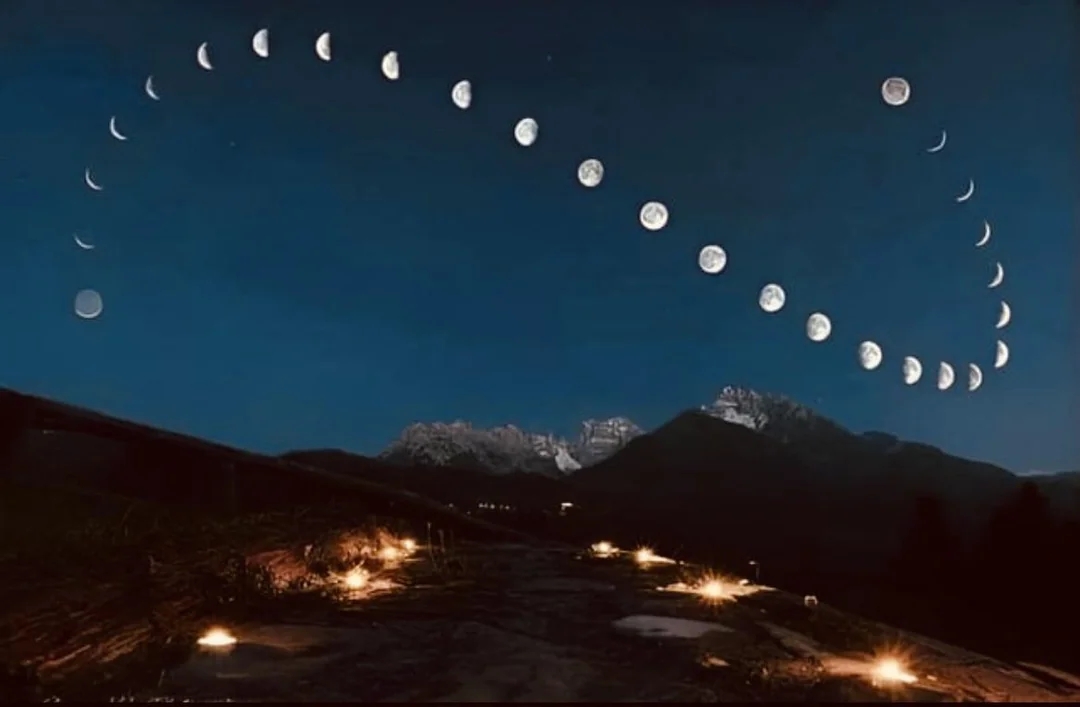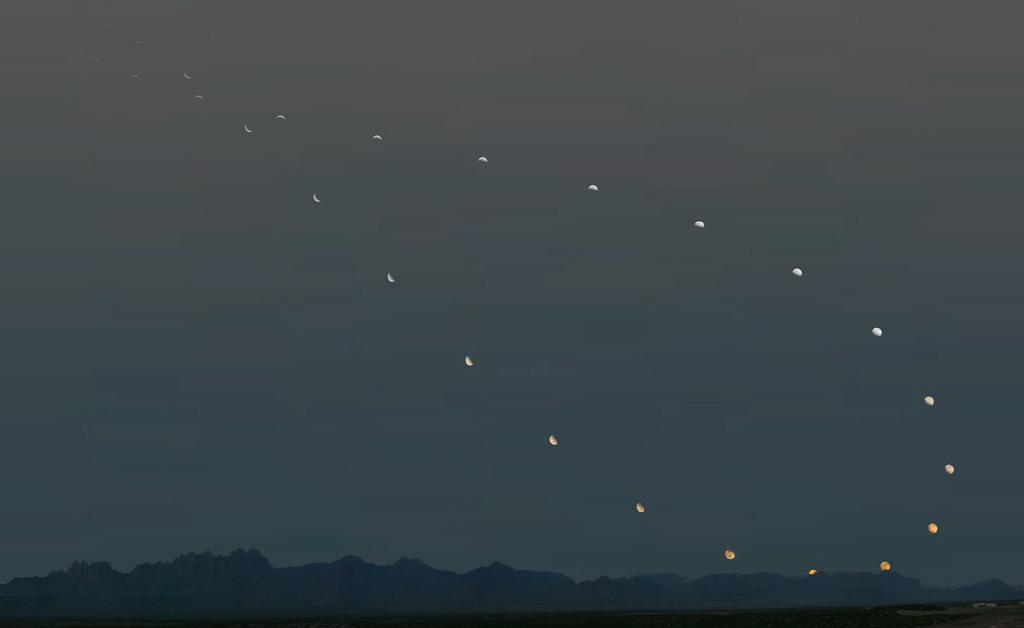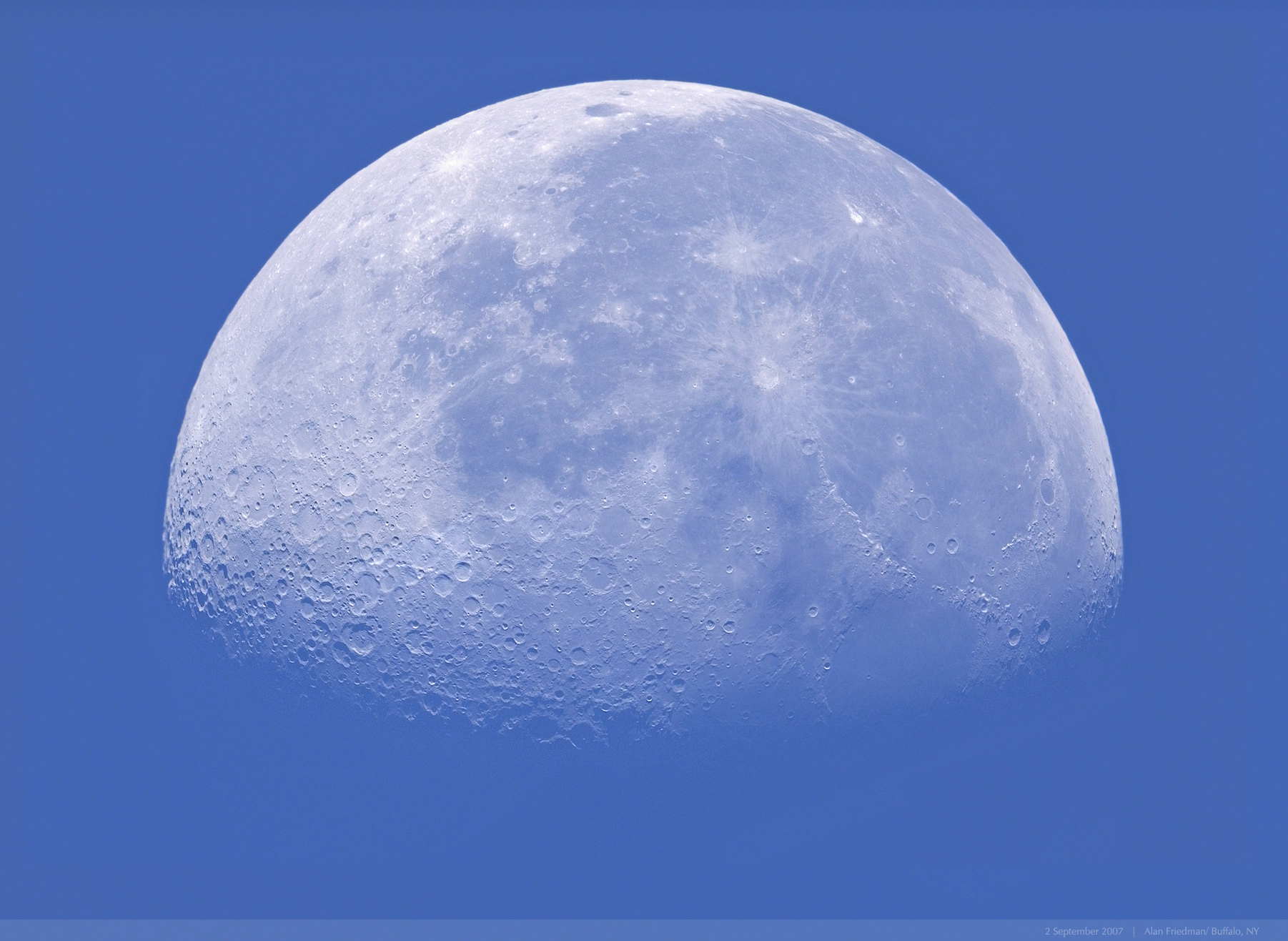The moon hangs in our night sky as Earth’s most faithful companion, moving through its predictable cycle with clockwork precision. While the sun dominates our daylight hours, the moon commands our nights, its silvery glow a beacon that has guided travelers, inspired poets, and marked time for civilizations throughout human history.
What makes the moon particularly fascinating is its remarkable consistency. Every 29.5 days, our celestial neighbor completes a full cycle of phases, returning to the same position relative to Earth and the sun. This lunar month, slightly longer than our calendar month, represents one of nature’s most reliable timekeepers.
The phrase “same time, same place, 28 days” nearly captures this phenomenon. While the exact cycle averages 29.5 days, the moon’s position in our sky follows a pattern so reliable that ancient peoples worldwide used it as the foundation for their earliest calendars. The word “month” itself derives from “moon” – a linguistic reminder of how fundamental lunar cycles have been to human timekeeping.
What we perceive as the moon’s changing appearance isn’t the moon itself transforming, but rather our perspective of its sunlit face as it orbits Earth. The moon doesn’t generate its own light; it merely reflects the sun’s. As it travels around our planet, different portions of its sunlit hemisphere become visible to us.
During a new moon, the side facing Earth remains in darkness. As days pass, a sliver of light appears – the waxing crescent. By day seven, we see the first quarter moon, half-illuminated. The waxing gibbous phase follows, leading to the full moon around day 14 or 15, when the entire face visible from Earth reflects sunlight. Then the cycle reverses: waning gibbous, last quarter, waning crescent, and back to new moon.
Throughout history, the moon’s predictable rhythm has been woven into the fabric of human culture. Ancient Egyptian, Babylonian, Chinese, and Maya civilizations all developed lunar calendars. Religious holidays still follow lunar timing – Ramadan in Islam, Passover in Judaism, and Easter in Christianity all depend on lunar positioning.
Beyond timekeeping, the moon has inspired countless myths and legends. From the Greek goddess Selene driving her lunar chariot across the night sky to the Chinese story of Chang’e forever dwelling in the Moon Palace, our satellite has populated our collective imagination with rich storytelling.
Our scientific understanding of the moon has evolved dramatically. We now know it formed approximately 4.5 billion years ago, likely from debris following a massive collision between Earth and a Mars-sized body. Its gravitational pull creates our ocean tides, and its presence may have helped stabilize Earth’s axial tilt, potentially enabling the development of life.
The Apollo missions brought humans to the lunar surface, with Neil Armstrong’s “one small step” in 1969 marking a pinnacle of human exploration. These missions returned 842 pounds of lunar samples, revolutionizing our understanding of lunar geology and formation.
Today, the moon remains both a scientific frontier and a cultural touchstone. Countries worldwide have renewed interest in lunar exploration, with missions planned to establish research stations and potentially serve as stepping stones for deeper space exploration.
Meanwhile, on Earth, millions still plant gardens according to lunar phases, romantics still walk beneath its glow, and children still learn the nursery rhymes about the man in the moon.
As we gaze upward at night, the moon provides a rare constant in our rapidly changing world. While technologies advance and societies transform, the moon continues its ancient cycle – same time, same place, every 28 days (give or take). This dependable presence reminds us of natural rhythms that have existed long before us and will continue long after – a cosmic timekeeper marking the passage of our human story against the grand scale of universal time.







